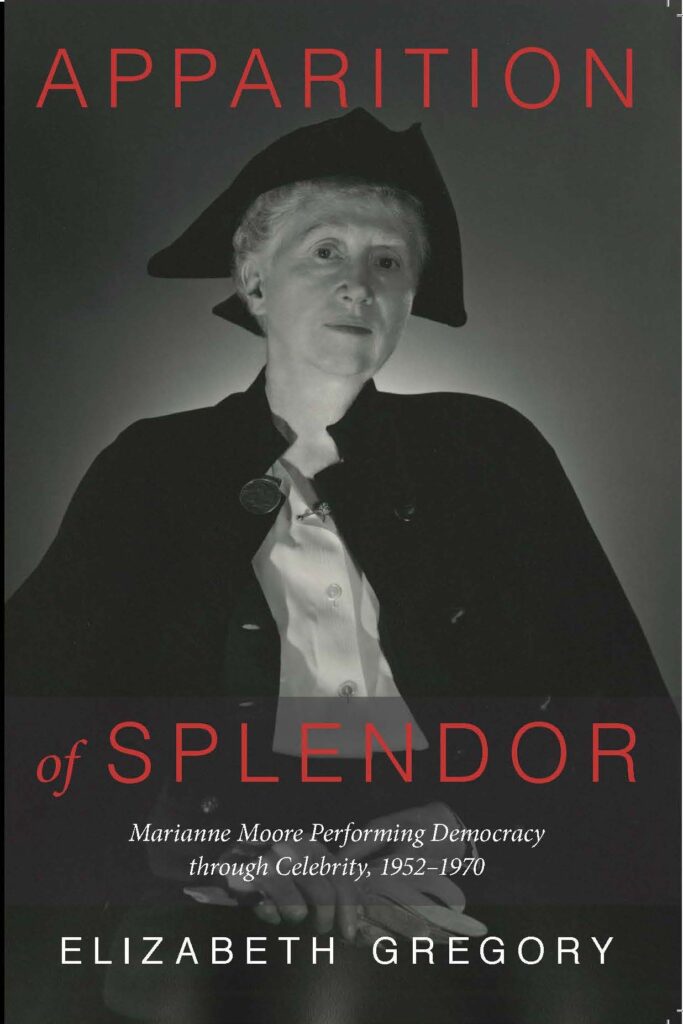Happy to share a quick introduction to my new book – out in 2021 from U Delaware Press/Rutgers UP. Link to Rosenbach Book Talk.

Until recently, the 53 poems of Marianne Moore’s last two decades (23 published in the New Yorker) have been largely ignored by critics. Apparition of Splendor examines them as a distinct set, exploring the wide range of issues they engage with or raise, offering in-depth readings of many and arguing that the later work is interesting and rich – and worthy of further study.
MM’s Collected Poems won 3 major prizes* in one year (1952) and she became well known as a “prize winner.” In this period, Moore created a celebrity performance persona, which often involved her crossdressing as George Washington. Her work appeared in print in venues of all brow levels as did many stories about her, and she appeared widely—at readings, at events and on TV and on radio, engaging and entertaining her enormous audience of fans.
[*The Pulitzer Prize, the National Book Award and the Bollingen Prize.]
Moore began her poetic career in the 19-teens and twenties as among the “highest” of “high moderns” (read: pretty obscure to the general reading public). But ever since those early days, she had already been evolving her work to make it more accessible, to a wider audience – through emotion and humor. She became widely known during WW2 as a patriotic poet, through poems like “What Are Years?” and “In Distrust of Merits.”
In the postwar context of new, democratizing mass media and a heightened celebrity culture that crossed classes and tastes, Moore presented thought-provoking material in new and entertaining ways in order to engage and amuse audiences of all brow levels, in a range of popular journals. Her readers might reflect on this material or not, to the extent they preferred, but all would confront difference in some form in engaging with Moore and her poetry and learn something about democracy and diversity from that encounter.
Whereas her early poems enacted authority through an elite position even as they questioned the hierarchies that position rested upon, her later poems continued that questioning from a popular position that allowed her to advance a democratic agenda through a performance that combined comedy with serious cultural reflection, often on issues of equity and access.
Among the topics touched on in AOS:
•Moore’s comedic performance / persona
•her democratic / anti-racist poetry
•her habitual ekphrases
•her inclusive poetry of current events & shared culture
•her celebrity activism
•her cross-brow / high-low poetry
•her modeling nonconformist sexuality
•her poetry’s relation to younger contemporaries’
•the dialogue among her poems
•her many poems about aging, death & legacy
•her “reveal and veil” presence in poems
•her work’s dialogues with Blake and others
•her occasional poetry – and later readers
•the evolution of her poetics over decades
•the role of shape and form (literal images)
•her modeling elderly female authority
•her habits of revision and omission
•and more!


